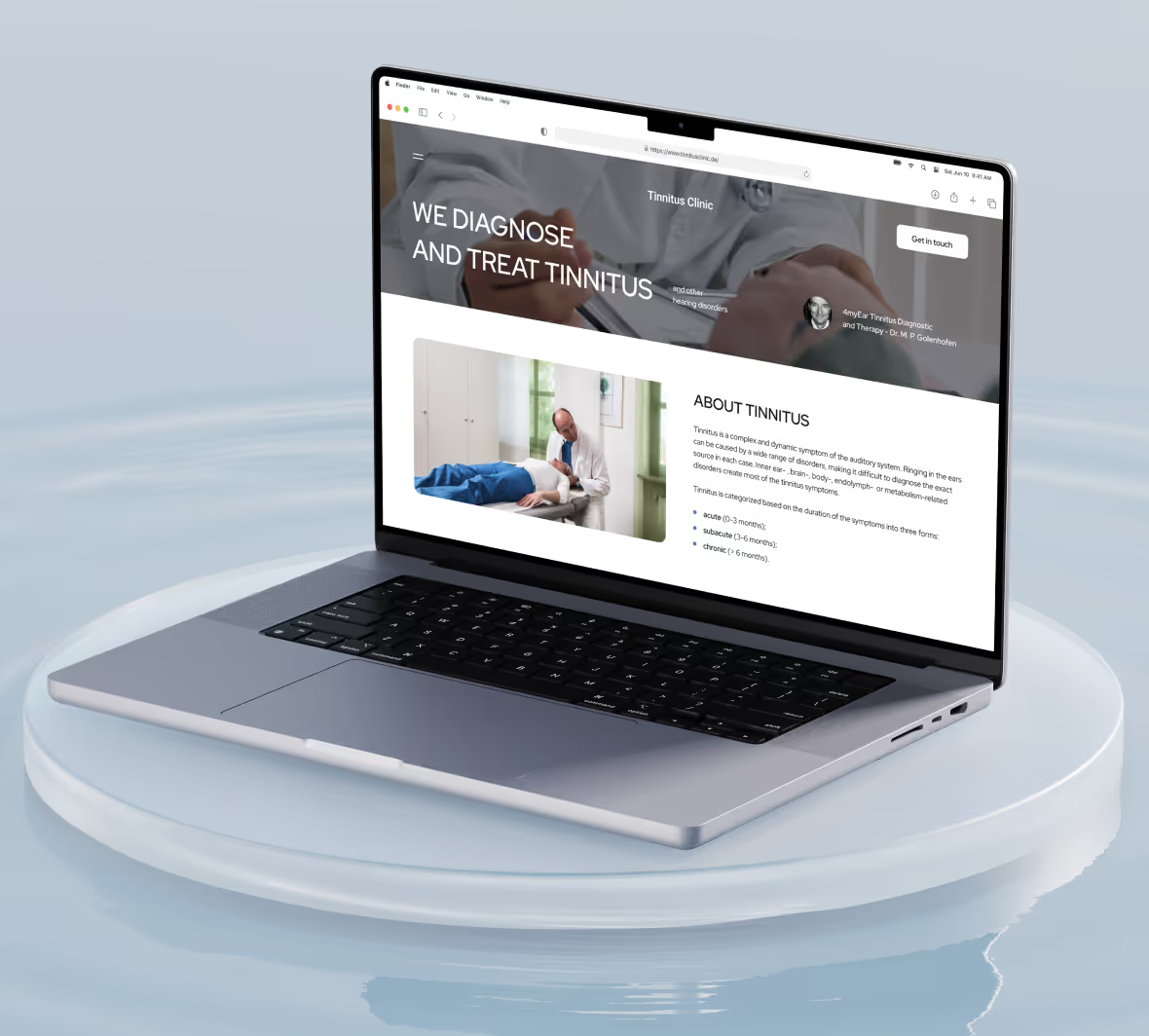
Launching a startup is a great way to take control of your career by building a business around your passion. But getting started can be overwhelming. Where do you even begin? For many aspiring founders, the biggest challenge is developing a viable business idea. Once you tackle that hurdle (which takes time), the next step is launching your startup to test your hypothesis before fully committing to it. This is where a no-code MVP comes in.
Using a no-code approach to build your business’s most basic version allows you to launch faster, test your idea, and make informed decisions on how to proceed—all without writing a single line of code. This guide will walk you through launching a startup and how a no-code MVP can help you get there faster.
Minimum Code is a no-code development agency that can help you launch your startup. From building your MVP to creating your business’s website, we can help you achieve your goals faster so you can focus on what matters—your business.

Scalability for Startups
Scalability for startups is all about growth. A scalable startup can grow revenue without a corresponding increase in costs. This means it can expand operations, serve more customers, and enter new markets without incurring excessive additional expenses or compromising the quality of its products or services. For instance, a software company with a cloud-based application can easily accommodate new users without expanding infrastructure significantly. On the other hand, a non-scalable business model might involve personalized services that require a one-to-one customer-to-staff ratio, limiting growth due to staffing constraints. This can be a significant barrier to success.
Critical Characteristics of Scalable Startups
Several features distinguish scalable startups from traditional small businesses. Here are some core traits that can help a startup achieve scalable growth:
Lean Operations
Scalable startups operate with lean principles to minimize waste and maximize efficiency. By avoiding unnecessary expenses and streamlining processes, lean operations ensure that resources are utilized most effectively.
Technology-Driven
Most scalable startups rely heavily on technology to drive growth. Technologies like cloud computing, automation, artificial intelligence, and data analytics allow businesses to serve more customers efficiently and make data-informed decisions.
Demand-Responsive
A scalable startup is structured to respond quickly to shifts in market demand. This could involve using a modular approach to product development or cloud-based infrastructures that adapt to changing user loads.
High Automation Potential
Automation in areas like customer support, marketing, and sales enables startups to handle larger volumes of transactions or customer inquiries without needing to add to their workforce extensively.
Why Scalability Matters
Building scalability into a startup is essential for survival in competitive industries, especially as markets evolve rapidly and customer expectations grow. Here’s why scalability is so important:
Long-Term Viability
A scalable startup will likely withstand market fluctuations and adapt to new trends. This adaptability helps businesses stay relevant and profitable over time.
Competitive Edge
Startups that scale quickly can seize larger market shares before competitors do. Rapid growth attracts investment, creates brand awareness, and can even lead to economies of scale that allow the startup to operate more cost-effectively.
Financial Sustainability
By keeping operational costs in check while increasing revenue, scalable startups are more likely to be financially sustainable. Scalability can make the business appealing to investors, as it demonstrates the potential for significant returns with manageable risks.
Ability to Attract Talent
As scalable startups grow, they attract top talent eager to work for a company that offers stability, growth opportunities, and innovation.

Related Reading
• MVP Testing Methods
• MVP in Scrum
• MVP App Development
• Types of MVPs
• Lean Startup Validated Learning
• MVP in Agile
• Minimum Viable Product vs Prototype
• Minimum Viable Product Examples
Build a Scalable Business Model
Elements of a Scalable Business Model
A scalable business model allows for increased revenue with minimal additional costs. Here are the primary elements that make a model scalable:
Value Proposition
It is essential to identify your startup's unique value. For example, a value proposition emphasizing convenience, cost savings, or an innovative solution attracts a broad audience and creates demand.
Market Demand
A scalable model targets a growing market. Addressing needs within a broad market segment allows your startup to expand its customer base without substantially changing core offerings.
Distribution Channels
Effective, cost-efficient distribution channels are crucial. Many scalable startups utilize digital channels, including websites, social media, and online marketplaces, allowing wide-reaching, low-cost customer acquisition.
Automation and Self-Service
Building automation into customer service, sales, and other operational processes enables growth without a parallel increase in human resources. For example, SaaS companies often use self-service onboarding and automated customer support to serve thousands of users without significantly expanding their workforce.
Revenue Models Suited for Scalability
Revenue generation models play a significant role in ensuring scalability. Here are a few revenue models commonly used by scalable startups:
Subscription-Based Models
This model is popular among SaaS companies. Customers pay a recurring fee for access to services. The subscription model allows predictable revenue and scalable customer acquisition.
Freemium Models
By offering a free basic version and premium upgrades, startups can reach a larger audience and convert loyal users into paying customers. The freemium model is ideal for tech products where value grows as users increase engagement.
Marketplace or Commission-Based
In this model, the startup facilitates transactions between two parties (buyers and sellers), earning a commission for each completed transaction. Platforms like Airbnb and Uber have grown using this model.
Licensing or Royalties
Licensing allows startups to charge other businesses for using their technology or intellectual property, often creating a low-maintenance revenue stream.
Validating and Adapting the Business Model
Testing and validation are critical to ensure the scalability of a business model. Here are steps to validate and refine your model:
Customer Feedback and Iteration
Early-stage user feedback helps refine products and services. You can adjust your model for better market fit by understanding customer needs and pain points.
Financial Forecasting
Use projections to estimate how costs and revenue will change with growth. Forecasting tools help determine whether operational costs will stay proportionate to revenue increases, ensuring the business remains profitable as it scales.
Market Testing
A/B testing and market trials help you test customer interest and willingness to pay. Running pilot programs on a small scale enables testing revenue models and operational structures before full-scale implementation.
Examples of Scalable Business Models
Netflix (Subscription-Based)
By charging a monthly fee for content access, Netflix scales easily by adding new customers without a proportional increase in operational costs.
Slack (Freemium to Subscription)
Slack’s freemium model lets teams start using the product for free and upgrade to premium tiers as their needs grow.
Shopify (Commission-Based)
Shopify charges merchants a percentage of sales plus a subscription, enabling the platform to grow with each additional seller.
By understanding and implementing a scalable business model, startups can ensure sustainable and cost-effective growth, positioning themselves to meet market demands without compromising quality or profitability.
Bring your long-held business ideas to life with us. Get a free product discovery and scoping for your app idea today!
Related Reading
• MVP Features
• Develop MVP
• MVP Development Cost
• How to Build an MVP
• MVP Development Process
• MVP Benefits
• MVP Development for Startups
Creating a Minimum Viable Product (MVP)
What is an MVP, and Why Does It Matter?
MVP stands for Minimum Viable Product. An MVP is a product version that includes only the essential features to satisfy early customers and provide feedback for future development. By focusing on core functionalities, startups can validate their concept, attract initial users, and minimize time and financial investment. Here, we’ll explore the MVP approach, the benefits of launching with an MVP, the steps to create one, and examples of successful MVPs in scaling startups.
The Concept and Benefits of an MVP
The MVP concept, popularized by the Lean Startup methodology, encourages startups to validate their idea with minimal resources. Launching with an MVP offers several benefits:
Reduces Initial Costs and Time to Market
By focusing on core features, startups can save development time and reduce costs, reaching the market faster.
Gathers Real User Feedback
Early users provide valuable feedback, helping refine the product based on real-world experiences and preferences.
Validates Market Demand
An MVP tests the demand for your product, showing whether users are interested in paying for it before you invest heavily in development.
Minimizes Risk of Failure
With user data guiding product improvements, the MVP approach reduces the chances of developing unwanted features or building a product that doesn’t fit market needs.
Steps to Create an Effective MVP
Creating a successful MVP requires balancing functionality with simplicity. Here’s a step-by-step process to follow:
Identify the Core Problem
Start by clearly defining the problem your product intends to solve. For instance, if creating an app for meal planning, focus on critical challenges like planning, shopping, and managing recipes.
Define Key Features
List features that directly address the core problem and add value for users. Prioritize essential features over “nice-to-haves” that don’t affect the primary functionality.
Map the User's Journey
Create a user flow diagram to visualize how users interact with the MVP. This will help ensure a smooth experience and clarify the features necessary for the primary product functionality.
Develop a Prototype
Use mockups or a prototype to visualize the product. Prototypes allow you to get feedback from stakeholders and potential users before investing in full-scale development.
Launch to a Target Audience
Release the MVP to a specific audience segment—such as early adopters or a small geographic area. This allows you to monitor engagement and collect targeted feedback without overwhelming your resources.
Examples of Successful MVPs
Many successful startups launched with an MVP and iterated based on user feedback. Here are a few notable examples:
Dropbox
Before developing its product, Dropbox released a simple video demonstrating its file-sharing functionality. This video alone generated enough interest to validate the idea without building an expensive prototype.
Airbnb
Airbnb started by renting out a few air mattresses in a small apartment. This MVP approach helped validate the concept of home rentals, eventually leading to one of the most popular platforms for short-term accommodations.
Zappos
Founder Nick Swinmurn initially tested the demand for online shoe shopping by taking photos of shoes from local stores and listing them online. The success of this MVP led to a billion-dollar e-commerce business.
The MVP approach helps startups minimize costs, iterate based on honest feedback, and move toward a scalable business. With a validated MVP, startups can confidently invest in feature expansion and growth while knowing they have a product that meets user needs.
Building a Strong Team and Culture
The Significance of a Strong Team in a Startup's Success
As your startup grows, the people you surround yourself with become crucial to its success. A strong team enhances productivity and contributes to a positive company culture, significantly impacting your startup's ability to scale. Here, we will discuss the importance of assembling the right team, strategies for building a strong culture, and ways to ensure your team is aligned with your startup's vision.
Why a Solid Team is Crucial to a Startup's Success
Diverse Skill Sets
A successful startup requires a mix of skills and expertise. Team members who excel in different areas—such as marketing, finance, and product development—can lead to innovative solutions and improved problem-solving.
Shared Vision and Goals
A strong team is aligned with the startup's vision. When everyone understands and believes in the mission, they are more motivated to work towards common objectives.
Increased Efficiency
A cohesive team operates more efficiently. When team members trust each other and communicate openly, tasks can be completed faster, and the startup can respond more quickly to market changes.
Adaptability
As the startup grows, it will face new challenges. A diverse team can bring different perspectives and ideas, enabling the organization to adapt and pivot when necessary.
Strategies for Building a Strong Team and Culture
Hire for Fit and Potential
While skills are essential, hiring for cultural fit is equally crucial. Look for candidates who align with your startup's values and demonstrate potential for growth within the organization.
Encourage Open Communication
Foster an environment where team members feel comfortable sharing ideas, asking questions, and giving feedback. Regular check-ins and open-door policies help maintain transparency.
Invest in Professional Development
Provide opportunities for team members to enhance their skills to encourage continuous learning. This can include workshops, online courses, or mentorship programs.
Celebrate Wins and Acknowledge Contributions
Recognizing individual and team achievements boosts morale and encourages a sense of ownership among team members. Celebrations don’t have to be grand; even simple acknowledgments in meetings can go a long way.
Create a Positive Work Environment
The physical and emotional work environment impacts team performance. To prevent burnout, ensure your workspace is conducive to collaboration and creativity and promote work-life balance.
Aligning Team with Vision
Regularly Communicate the Vision
Reiterate the startup’s mission and vision in meetings, newsletters, or company updates. This keeps everyone focused on the bigger picture and reinforces their role in achieving it.
Involve the Team in Goal Setting
Encourage team members to participate in setting team goals and objectives. This fosters a sense of ownership and aligns their goals with the startup’s mission.
Share Success Stories
Highlight how the team’s contributions lead to success. Sharing real examples of how their work positively impacts the company and its customers reinforces the importance of their roles.
Seek Feedback and Iterate
Create a feedback loop where team members can share their insights on company culture and alignment with the vision. Use this feedback to make necessary adjustments and improvements.
Building a solid team and culture is essential for scaling a startup. By hiring the right people, fostering open communication, and aligning the team with the startup’s vision, founders can create an environment that drives growth and innovation.
Minimum Code is a no-code development agency tailored for non-technical entrepreneurs looking to launch B2B SaaS or service web apps quickly. Our expertise lies in using tools like Bubble.io, Xano.com, and Webflow to deliver MVPs within a month.

Scalable Operations and Processes
As a startup grows, it attracts more customers and generates more revenue. However, this growth can strain the existing operations. If these processes aren’t suited to handle the increased load, the business will experience disruptions that hurt its bottom line and customer satisfaction. Scalable operations refer to a startup's ability to increase production capacity and efficiency without a corresponding cost increase.
As demand for products or services grows, the startup can expand its operations smoothly without significant disruptions. A scalable business model allows startups to snowball and capture market share. It ensures that the startup can efficiently meet increased demand, enhancing customer satisfaction and maximizing profitability.
Strategies for Optimizing Operations: How Can Startups Improve Their Existing Processes?
Standardize Processes
Documenting and standardizing key processes is essential. This creates a clear framework for team members to follow, which helps maintain consistency and quality as the team grows. Use process mapping to visualize workflows and identify bottlenecks.
Automate Repetitive Tasks
Leverage automation tools to streamline repetitive tasks. This can include automating customer relationship management (CRM) tasks, inventory management, or marketing processes. Automation reduces human error and frees team members to focus on higher-value activities.
Implement Agile Methodologies
Adopting agile methodologies allows teams to respond quickly to changes in market or customer needs. Agile practices promote flexibility, iterative development, and continuous improvement, which are crucial for scaling.
Outsource Non-Core Functions
Consider outsourcing functions outside your business model, such as accounting or IT support. This allows the team to focus on core activities that drive growth while leveraging the expertise of external partners.
The Role of Technology: What Tools Can Help Startups Scale Their Operations?
Invest in Scalable Technology
Choosing the right technology stack is essential for scalability. Cloud-based solutions provide the flexibility and scalability needed to support growth. Look for platforms that scale alongside your business needs, such as cloud storage, project management tools, and e-commerce solutions.
Data Analytics for Decision-Making
Utilize data analytics tools to gain insights into customer behavior and operational efficiency. This information can help make informed decisions about resource allocation, marketing strategies, and product development.
Customer Relationship Management (CRM)
A robust CRM system can enhance customer interactions and support sales growth. A CRM allows startups to manage customer relationships effectively, track leads, and streamline communication.
Scalable Supply Chain Management
Establishing a scalable supply chain is essential for product-based startups. Work with suppliers that can accommodate growth and ensure that logistics processes are efficient to prevent delays as order volume increases.
Related Reading
• No Code Agencies
• Creating an MVP
• MVP Development Team
• MVP Validation
• Launching an MVP
• MVP Tools
• Lean Startup MVP
Get a Free Product Discovery & Scoping for Your App Idea Today
Creating a Minimum Viable Product, or MVP, effectively reduces the risk of launching a startup. MVPs let you test your business idea before committing to a full-scale launch. Instead of building a fully functional app, an MVP allows you to create a simpler version of your app that focuses on core features.
Once you launch this version, you can gather user feedback to help you improve your web app before any significant investments. No-code technology can help you build an MVP quickly and without the need for technical skills. Instead of spending months or years creating an app, you can use no-code tools to make an MVP in weeks.

Ready to build your product?







